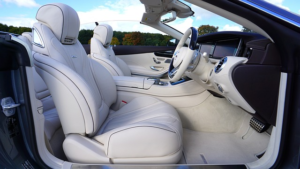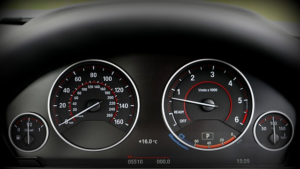Michael Moynihan: Cork has so many access obstacles — and it is hurting everyone – Irish Examiner
I’ve pointed out here more than once that a city for kids is a city for all — if children can access amenities within the city comfortably and safely then everyone, almost by definition, can do the same no matter what age they are.
Perhaps that was a bit idealistic, looking back. I met a pal out in Blackpool in Cork who took me on a brief stroll into town and pointed out obstacles t…….

I’ve pointed out here more than once that a city for kids is a city for all — if children can access amenities within the city comfortably and safely then everyone, almost by definition, can do the same no matter what age they are.
Perhaps that was a bit idealistic, looking back. I met a pal out in Blackpool in Cork who took me on a brief stroll into town and pointed out obstacles to access which aren’t confined to toddlers or primary school-age children.
In fact, he showed me how problems for one age cohort can lead to issues for other age groups easily enough.
We started looking up from Blackpool Retail Park at what should really be a commuter hub: the old Kilbarry yard on the main rail line into the city, where the original train station was before the tunnel was dug out to allow trains through to Kent Station.
What’s particularly disappointing about this absence of a commuter station is that it seemed so tantalisingly close for so long. Go back to last November and you could read in these pages about the plans for an €185 million Cork metropolitan rail line — new stations at Tivoli, Blarney, and Kilbarry were envisaged under the plan, which also estimated 30,000 houses zoned around those stations.
Almost immediately Minister for Environment, Climate, Communications and Transport, Eamon Ryan poured cold water on the prospect of the plans being realised within a recognisable time frame.
Transport Minister Eamon Ryan’s comments on the future of the metropolitan rail line were less than promising.
“You have to be careful,” he was reported as saying. “I didn’t want to go down the route of it’s going to cost exactly this and built exactly then.”
Not exactly encouraging, perhaps, particularly when saying it’ll cost exactly this and will be built exactly then is his job, but you wouldn’t throw up your hands at it either. Looked at in a certain way it seems sensible.
However, he did add: “I’ve been working on the [Dublin] Metro for 25 years. It [the Cork metropolitan rail] won’t be 25 years, or anything like it. This entire NDP we are going to build as quick as we can because the public transport projects are critical to solving the housing crisis.”
Well, hang on there a second. Because you can go back to 1999 at least and find newspaper reports detailing plans to open a rail station in Kilbarry, plans which have not come to fruition.
And even by my pass maths (L. Cert 1985), that means opening a rail station in Kilbarry has been discussed as a prospect for 23 years without being opened. Which is something very like 25 years.
The potential benefit which the entire city would enjoy from a station in Kilbarry are obvious: less traffic going into town directly would be one of the most obvious dividends, something which might help those on our next stop.
When my pal and I got sick of looking at the empty space where we wanted a commuter rail station we strolled in towards town, through Blackpool and up past the North Cathedral and down Shandon Street, glancing right up Blarney Street as we descended.
He insisted on heading up Blarney Street, and, though my hamstrings complained, on we went. He was showing me where a mutual pal had grown up, the part above the old High House pub, for a specific reason.
Car speeds increase above the High House where the road widens and, even though the plague of modern Irish life, the car parked straddling the footpath was much in evidence.
The car posed a double threat, then, to our mutual friend’s elderly mother. Getting up and down the footpath was a challenge to anyone with mobility issues because of the insistence of thundering ignoramuses in beaching their cars there.
Furthermore, crossing over and back to see friends on the other side of the street was tricky because of how fast cars were driving — and of course, because of the necessity of negotiating those cars littering the footpath, emerging between them to try to get across to the far side.
If there were a station then the splintering of a mutually supportive micro-community of elderly people who were long-time neighbours wouldn’t have been sundered.
When we’d finished there we came downhill and along the quay, eventually coming through the Coal Quay to Bishop Lucey Park.
You’re probably aware from recent stories in these pages that there are plans to extend the Freemason’s Hall on Tuckey Street into the park itself.
Eoin English reported Cork city councillors were told that the proposal will result in the loss of a fraction of the park though the extension “requires the removal of 15 semi-mature birch trees, nine of which are in good condition … but the report said it is proposed to plant 15 replacement birch trees immediately north of the extension”.
The notion that a private organisation — not to mention a secretive one — is swallowing up part of a public park, no matter how small, probably grates with many readers.
The idea that it’s just a small part of the park, and the trees that will be removed — cut down, in other words — can be replaced … that probably sounds perfectly reasonable unless you have a six-year-old child on hand to ask the most obvious question.
Why are you getting rid of some of the park?
If there had been teenagers present they might have echoed that question, because slimming down a public park means removing an option for teens — a sector of the population with limited options for meeting up to begin with.
The obvious parallel is with the cars abandoned with complacency on the footpaths of Blarney Street. Here was another example of public space annexed for private use, this time on a more permanent basis.
That concluded our short tour of the city. It was eye-opening in that it didn’t just reveal the challenges to commuters, the elderly, and teenagers. It also showed the similarity of those challenges and how one problem may contribute to another.
Perhaps that underlines how difficult it is to find a solution to one challenge without acknowledging how that particular challenge leads to other problems elsewhere in the urban ecoystem.
You could also say it was eye-opening to see that (non-exhaustive) series of challenges along one random stretch of the city, a stretch it took twenty minutes to stroll (briskly, I admit).
It was also pretty depressing to see every sector of society challenged in a different way. Less a city for all than a challenge for all.
Source: https://www.irishexaminer.com/opinion/columnists/arid-40895906.html






